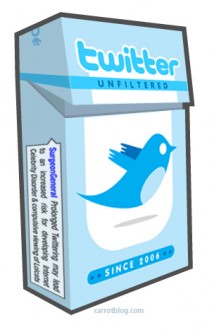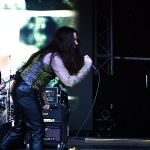Inside Twitter HQ
 Twitter is the hottest internet startup on the planet. Over the last few months, the messaging service it provides has morphed from a social networking tool into an instrument of revolution. So what’s life like for the 52 employees at its San Francisco headquarters?
Twitter is the hottest internet startup on the planet. Over the last few months, the messaging service it provides has morphed from a social networking tool into an instrument of revolution. So what’s life like for the 52 employees at its San Francisco headquarters?
It’s a sunny, breezy afternoon in San Francisco, and I’ve just stepped inside the offices of one of the city’s many, many web companies. Indeed, the first thing you notice is how much the large, open space looks just like any other dotcom. To one side there’s a huge flatscreen TV that staff can use to play videogames during their breaks; in one corner stands a lonely red British telephone box; a pair of life-sized, green plastic deer stand in another, for no discernible reason. It definitely has all the hallmarks of a web startup.
And if you didn’t know any better, you might guess that this one wasn’t doing too well. It’s so quiet that it feels like it could be the weekend – the only real noise is the murmur coming from a trio of workers, laptops out, sitting on a sofa in the corner.
But behind the calm, every-office exterior, lies the astonishing truth: the staff here are holding up the systems behind the world’s hottest internet startup. They are responsible for a sprawling website on which 35 million people from all over the world fire out vast numbers of messages every second. This isn’t just any normal office. This is Twitter.
Right now, the company’s 52 employees are part of the biggest media story on the planet. Their online messaging service – which encourages people to share their thoughts with the world in short, bite-sized morsels – has rocketed into the public consciousness over the past year.
It began as the kind of thing a hip young iPhoner would do, then won endorsements from people such as Stephen Fry and Oprah – who knew celebrities would want to let their fans know every time they left the house? – and then, most extraordinarily, it began to play a role in times of extreme crisis, getting information out of countries such as Iran and China where the authorities were tightly controlling the news.
And to top it all, this amazing journey – from plaything to instrument of social change – seems to have happened in a matter of months.
How does it feel to be at the heart of all that? “It’s a little bit like being in the eye of the storm,” says Biz Stone, one of the company’s co-founders. “It’s not hectic per se.”
I am meeting Stone – an amiable 36-year-old designer who is now the company’s creative director – to try to understand what life at Twitter has become since the team first started working on it early in 2006.
Back then, everything seemed like a happy accident: the team was working on a different project called Odeo – a set of tools for podcasters. It was making slow progress, but during a brainstorming session, programmer Jack Dorsey came up with an unrelated idea: a quickfire messaging system that helped people share information with groups of friends using their mobile phone.
|
|

|

Wallis Bird |
LATEST GALLERY IMAGES

Alanis Morissette 
Where Israel Goes, Misery Follows |
|
|

